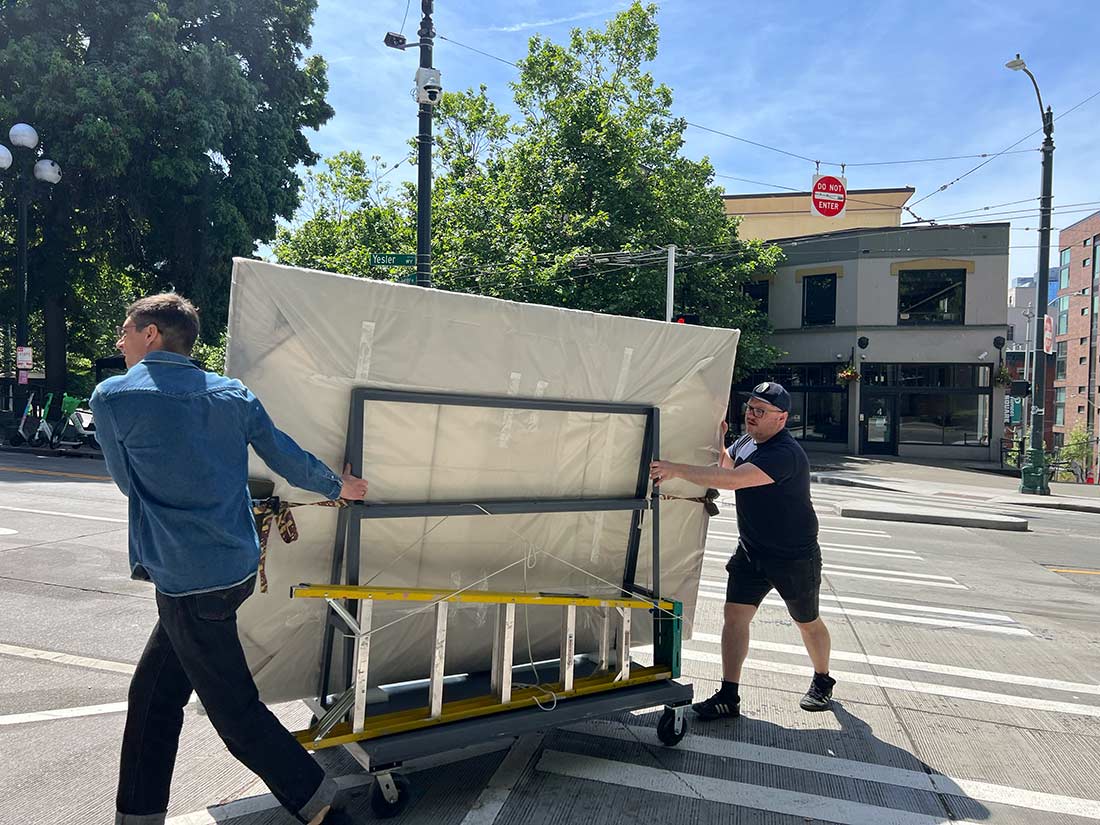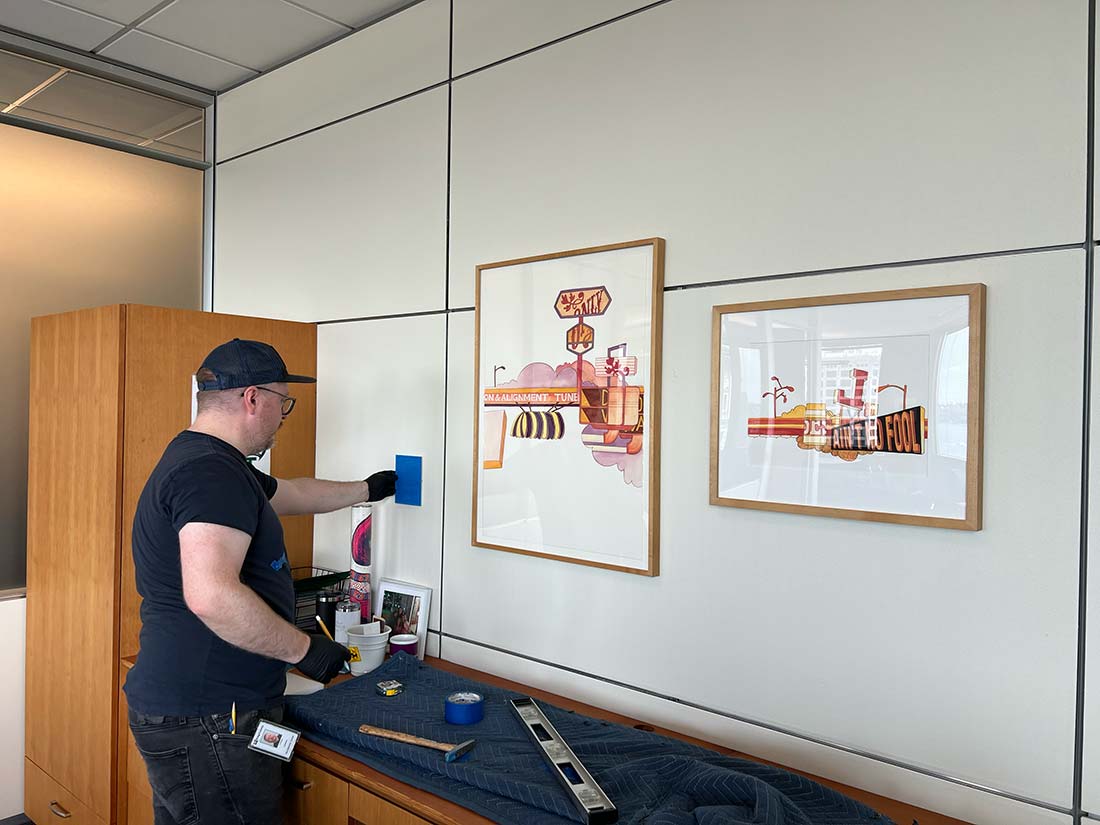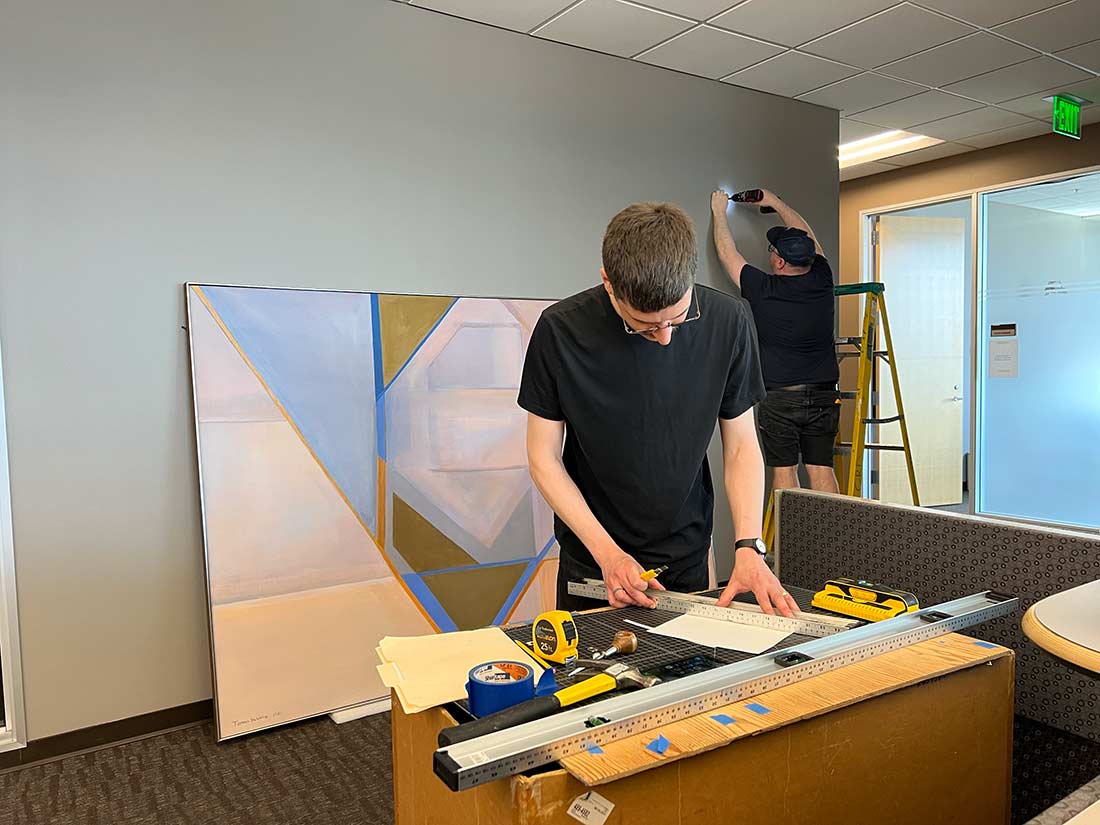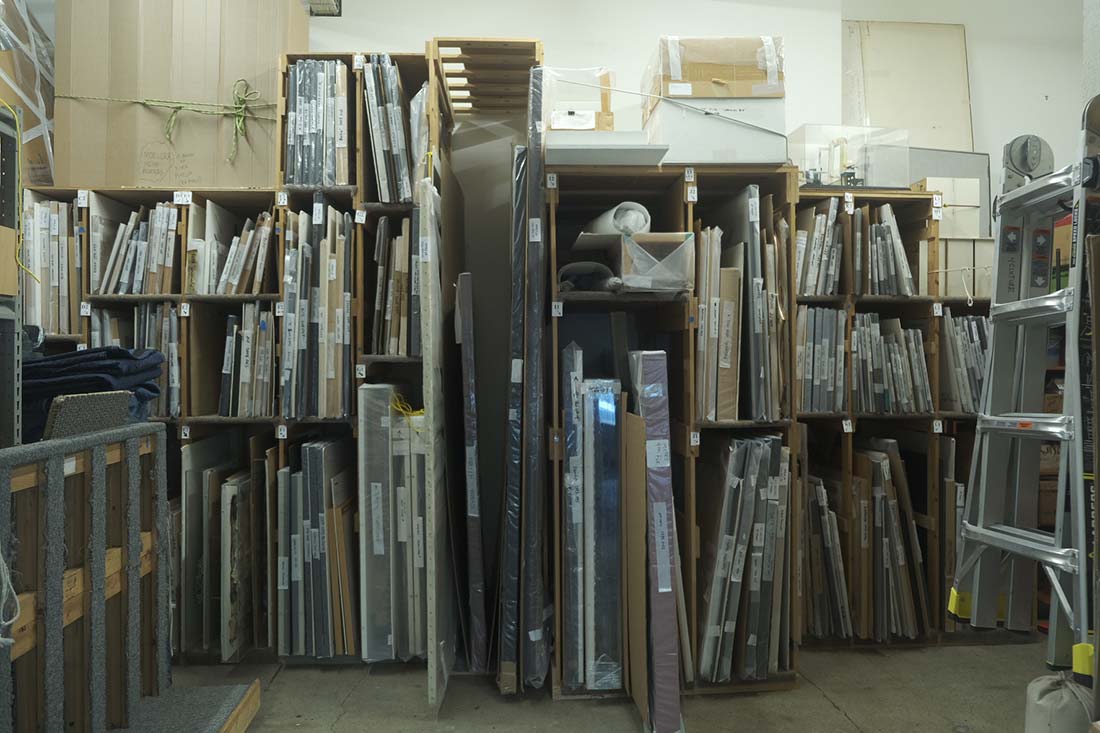Art on the Move: How portable works rotate through King County spaces

If you found yourself in Pioneer Square on a hot and sunny weekday last June, you may have seen something a little unusual on the street: a cart loaded with art, all of it carefully wrapped in plastic and bubble wrap, rolling up the hill from 4Culture’s office to the King County Chinook Building on 4th Avenue.
Pushing the cart were Guy Merrill, our longtime Public Art Collections Manager, and our new Public Art Collection Registrar, Pete Fleming, who had joined our team just a few days prior. They were transporting artworks from the storage facility at 4Culture to the King County Executive’s Office, where they were giving the art on view a big update.
“Sometimes the cart just makes more sense than loading things in and out of a van,” Merrill explains.
Collections management not only requires a lot of creative and technical skills, it also demands serious physical labor. Merrill and Fleming are responsible for the restoration, maintenance, framing, cleaning, and meticulous tracking of all the artworks in the King County Public Art Collection (KCPAC), and they team up with various local specialists to make sure the collection is properly cared for. They’re also in charge of moving pieces around, whether that’s the re-siting of a giant outdoor sculpture or a small watercolor on the wall of an office.

The KCPAC currently includes nearly 2,000 portable works that can move from one location to another, rotating among various County-owned spaces. These artworks change places for all sorts of reasons, among them a new building, an office refresh, or new leadership.
In the case of the Executive’s Office, staff there had reached out to express their interest in an art overhaul after Shannon Braddock was appointed Executive last spring. Thus began a collaboration with 4Culture staff to determine what artwork to remove, what to keep, and where exactly everything should eventually be installed. The group was inspired to emphasize artwork by women, inspired by Braddock becoming the first female King County Executive.

As he often does, Merrill started the process with a walkthrough to get a sense of what folks in the Executive’s Office wanted to achieve by changing up the art in their space. He then recruited several members of 4Culture’s public art team to help identify pieces that would be a good fit for it. Together they created a shortlist of potential artworks for their partners in the Executive’s Office to consider before eventually settling on a set of 34 pieces to install, including a few works by men that had already been hanging in the space. At that point, Merrill returned to the Executive’s Office with printouts of each piece and taped them to the walls to give people a sense of what the placements would ultimately feel like.
The final picks included 2D works by Kristen Ramirez and Lorna Jordan, “two artists who were really important to public art in our region,” Merrill says. “This is a way to honor them.” Both passed away in 2021.
The final selection also features pieces by Faye Jones, Mary Randlett, Margaret Tomkins, Mandy Greer, and Victoria Haven, as well as Other Rooms (Harlem Street Scene), a beloved print by Jacob Lawrence.
“There’s great stuff that’s been in storage and hasn’t been out in the world,” Merrill says. “I always want to do right by the artists in the collection and give them an opportunity to be seen.”

Today, Merrill and Fleming have many more portable works installations in their queue. The installations range in scope and complexity; some come together fairly fast but others can take shape over a period of years, particularly if they involve interior designers and architects. All are geared toward improving County spaces for the people who work in and visit them, and all lead to stronger connections between 4Culture and other King County departments.
Our two-person collections team recently completed an installation for the Department of Natural Resources and Parks in the King Street Center building, and they’re underway installing a whopping 54 artworks in the new King County Metro offices. To prepare for the undertaking, Fleming created an exacting digital layout using architectural drawings. It’s imperative to plan for any and all potential challenges.
For example, will the biggest pieces even fit in the freight elevator? That’s just one piece of the puzzle. “I’ll also walk out of the elevator with an extended tape measure,” Fleming says, “because even if you get a piece into it, it’s not much help if you can’t get it out.”
